"All my life I've been tossed in the garbage, except when men wanted to use my body."
"Do you like to ride, Elaine?"
*****
Released two years ago this month, writer-director-editor-producer Anna Biller's 2016 indie sensation The Love Witch remains one of my favorite films in recent memory.
The story is elegant in its simplicity: Elaine (Samantha Robinson) is our titular Love Witch, using what she refers to as "sex magic" and "love magic" to make men love her. She's a beautiful, and beautifully symbolic, metaphor for both the male gaze in cinema and men's innate fear of womanhood, as well as embodying societal linkages between women, love, and sorcery.
The film understands how men have historically viewed women as they wish to see them—beings of pure fantasy, there to serve male desires. The Love Witch spins that reality on its head in wildly entertaining and deliciously subversive ways.
The men are mostly clods and dopes who go weak in the knees when confronted with a woman like Elaine, who desires nothing more than to serve their every whim...until she ultimately realizes she still feels empty. But she keeps trying, over and over, while the hapless men keep meeting gruesome ends. It's sex-farce as pointed social commentary.
Biller must've thought she'd been sent a gift from on high when Robinson auditioned because she's absolutely perfect for the role as written. She fits magnificently with Biller's arch sensibilities and retro-groovy 1960s art direction. Enchanted is the word I've come back to often when thinking of the movie. It quite literally enchants me, as if I too have fallen under Elaine's potent spell.
The film is richly crafted, every element sumptuously designed and deployed for maximum cumulative effect. It works across multiple layers—as Technicolor visual feast for the eyes; as retro 1960s horror-comedy; as searing feminist critique; as an enjoyable exercise in the subtle joys of presentational acting; and let's not forget, as a disturbing look at male-female relations. Biller weaves her own spell, magically melding all of these elements together into one glorious, utterly unique movie.
The style and visual artistry on display makes it one of the best-looking films I've ever seen. The color pallet positively pops and crackles with sexually charged energy befitting of the Love Witch. Certainly, the set designs (those velvet paintings are to die for), art direction (bold, saturated colors), and costuming (Elaine's outfits, like her paintings, are to die for) are meant as playful homages to classic 1960s and Old Hollywood cinema, but Biller still manages to create something wholly unique, that stands fully on its own.
Most films take years, decades even, to earn cult classic status. The Love Witch is that rare breed that seemed fully certified with cult status from the moment it premiered. Reviews were largely glowing. I have little doubt its reputation will only grow with time.
This is a keeper, the sort of film you want to revisit every year. Just to be enchanted, all over again.
*****
In my humble opinion, The Love Witch is one of the most visually stunning films in recent years. In honor of its eye candy appeal, here are some GIFs to savor.


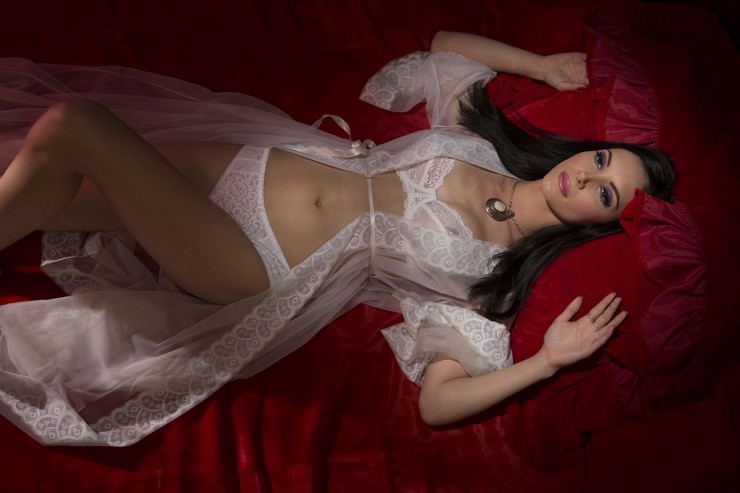







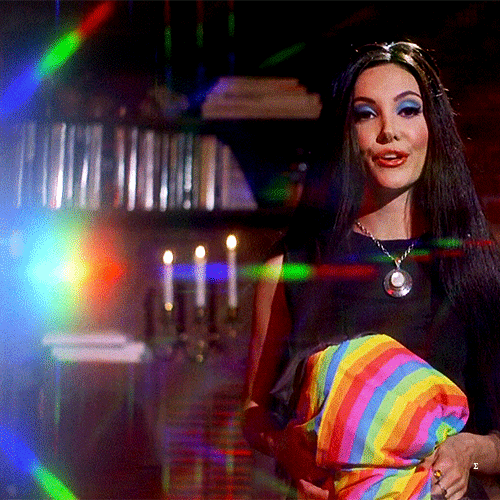

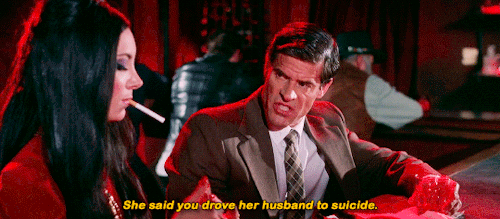
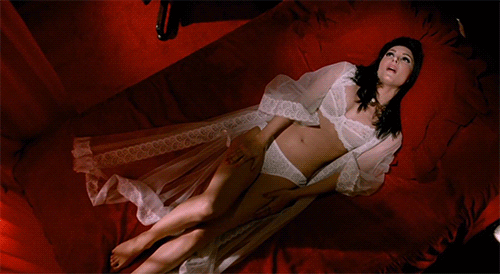
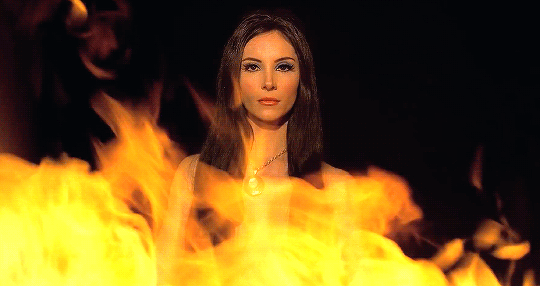
Comments
Post a Comment